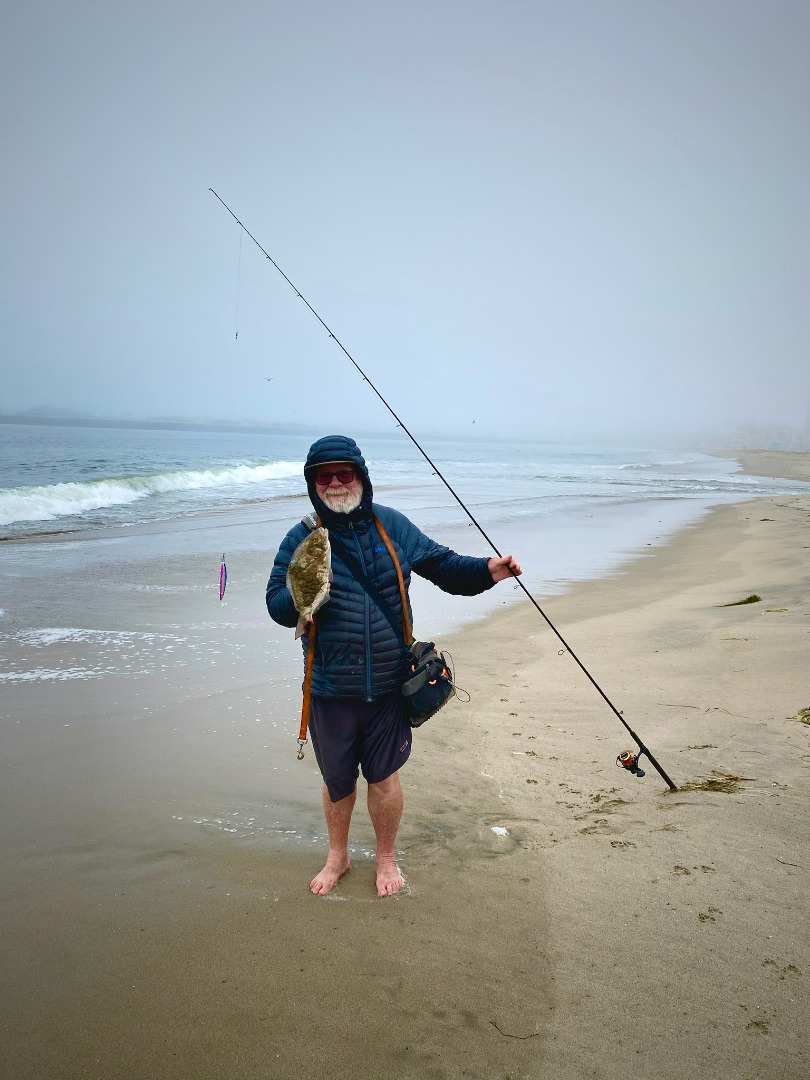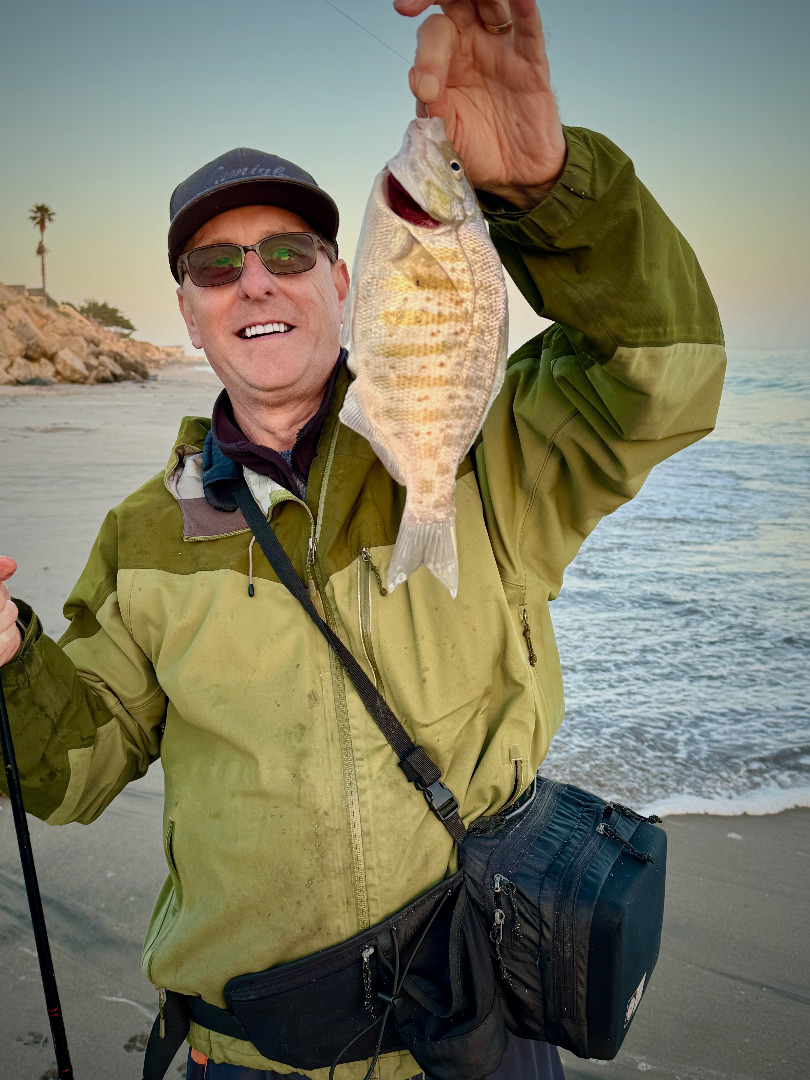Santa Cruz Fish Report for 7-26-2024
Gearing up for your surfcasting adventure
Santa Cruz - Santa Cruz, CA

by Allen Bushnell
7-26-2024
Website
This is the second column of a two-part series looking at the simplest, most accessible and some would say, the most fun sort of fishing available around the Monterey Bay. You don’t need a boat. You don’t need waders and waterproof boots. Just wear your quick-dry shorts and sandals down to the beach and wade in. Some anglers do prefer wearing waders for comfort and warmth. The upside of using waders is, you can stay warmer and you can stand in knee-deep water to get your casts out a bit further.
Downside of that practice is, knee-deep water can become hip-deep or even chest-deep in an instant when the swells are big. And, that wall of water can come from the side or even behind you. Safety should always be the number one priority. I like to follow an outgoing wave down the beach slope, make my cast then backpedal up the beach to the damp sand area, then begin my retrieve. The common phrase is “Never turn your back on the ocean.” I would add, “Keep checking behind you so you don’t trip over a log or seaweed or someone’s dog as you backpedal.” Checking behind you is also a good idea just before you make your cast. Make sure the area behind you is clear so you don’t hook that dog, or one of the kids playing on the beach.
There are many models of rod and reel made specifically for surfcasting. Nine to eleven feet long is usually preferred. The rod can be light and sensitive rated between 8-15 pounds, which is preferable for perch fishing, or heavier such as 15-30 pounds if your prey is striped bass specifically. Spinning rods are usually preferred for surfcasting, though some anglers do really well with bait casting outfits. My preference is a 10-foot steelhead “drift” rod rated at 10-18 pounds. This size is light enough to detect the subtle perch bite, but strong enough to bring in a decent sized striper when I’m lucky enough to hook one. The lighter rod makes fighting a bigger fish much more of a challenge, and landing one much more of an accomplishment. Spin reels in the 2500-4500 sizes are most typically paired up with an appropriate sized rod.
Really, you can use any sort of gear you might have out in the garage or gathering dust in the closet. You just have to be able to cast it. Trout rods, bass rods, six feet or eleven feet long all can work just fine for your initial forays into surfcasting. Gigantic casts are not always necessary. Our usual surf fish, perch and striped bass, can be feeding at the end of your longest cast, but also can be much closer to the beach, often just behind the final shorebreak at your feet
For terminal tackle, most surfcasters use a Carolina rig. This rig uses a sliding egg sinker above a swivel with a three to six-foot leader on the end. Sinker weights usually vary from 1/2 to 1-1/2 ounces. You want the weight to be able to flow along with the currents for best presentation. Baitholder hooks in the #6 to #1 sizes complete the setup. If you keep missing hits, go down a size on your hook. If the perch you intend to release keep getting the hook down their throat rather than neatly on the lip edge, the go up a size or two.
Looks like we may have to stretch this series out to three columns to cover additional rigging techniques and using lures rather than baits.
More Reports

7-19-2024
Monterey Bay is only 25 miles across, from Santa Cruz to Monterey. But, we have 90 miles of shoreline as...... Read More

7-12-2024
Despite the muscular south swell that rolled through the bay this week, fishing remains very strong. Early morning conditions couldn’t...... Read More

Website Hosting and Design provided by TECK.net